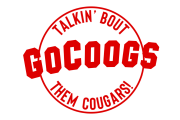Guy V. Lewis started talking about it almost as soon as the Astrodome had opened in 1965. By early the following year, he convinced UH AD Harry Fouke that it could be program-defining. Fouke brought in Judge Roy Hofheinz, who saw the vision immediately, and together they presented the idea to television executive Eddie Einhorn. Einhorn, Fouke, and Lewis pressed UCLA AD JD Morgan, and he, in turn, convinced John Wooden. Soon they reached an oral agreement.
Houston would play UCLA at the Astrodome in 1968.
The first rumors spread a little more than a week after UH played the 1966 NCAA Tournament. Following a first-round win in Wichita, Houston went to LA for the West Regional, played at Pauley Pavilion on the UCLA campus. UCLA won the previous two national titles but was not in the 1966 tournament, meaning both Morgan and Wooden would be in attendance at the regional. The Amarillo Globe-Times published the first rumor of the game 22 months before being played.

UH announced the game when they opened the 1966-67 season in December.
By that time, Eddie Einhorn had gone to work selling the game. Guy V. Lewis deserves credit for the original idea, but Einhorn made it happen on the biggest stage. Einhorn was a born promoter and produced the NCAA Tournament’s national syndicated radio broadcast since 1958. Two years after that, he founded a television syndicator called TVS and broadcasted college basketball broadcasted games regionally for several years. The Game would be the first-ever shown nationally.
Einhorn pushed UH and the Astrodome to promote the idea that they could sell 50,000 seats to the game, giving him leverage to sell the broadcast to TV stations in major media markets. He traveled the country pushing the game as an event: he convinced local TV stations to buy the rights to show the game and promote it locally in newspapers. That revenue would justify sportswriters traveling to Houston for the #1 vs. #2 matchup, which would lead to days or promotion for the game, which would help ratings. As the hype built, more stations signed on, and most decided to preempt Saturday night programing to show what had started to be known as “The Game of the Century.”
Sportscaster Dick Enberg called the game for TVS. At the time, Enberg was a local star at KTLA in Los Angeles and was on the call for all of UCLA games on TV. UCLA insisted Enberg do play-by-play. Enberg had a successful career on NBC, but The Game was his first national broadcast.
“He was so far ahead of anyone in television at the time,” Enberg said about Einhorn. “He saw how truly big college basketball could be and had a major hand in making all that happen. The networks were way, way behind Eddie Einhorn.”
Judge Hofheinz rented a portable floor from, of all places, the Los Angeles Sports Arena, while the backboards came from Massachusetts. The teams walked down a red carpet all the way from the locker rooms to the court – hundreds of yards away.
“We ran down the ramp and they had a red carpet all the way out on the field,” student manager Howie Lorch said. “I still get goosebumps when I think about it. It kind of reminded me how the gladiators must have felt back in Roman times.” Lorch formed a bond with UH superstar Elvin Hayes and today, courtside at Fertitta Center is named after the two men.
Einhorn was still working to sell national advertising spots until halftime. The media sat in a dugout away from the floor, where Einhorn sat selling ads over the phone. He would sell one, write down the ad copy, and hand it to Enberg, who read it during breaks in the action. These were on top of the commercials shown during timeouts.
The game was “building momentum, and he was indeed taking Madison Avenue orders.” Enberg said in 2016. Einhorn was “writing those 10-second drop-ins I was reading the second half, so he could make a few thousand more bucks.
“Einhorn was a visionary.”
One part of his plan did not work: Einhorn sold the game to UCLA to host a viewing party at Pauley Pavilion. It was a sellout, but technical difficulties prevented the transmission. Everyone got their money back.
The game was a revolutionary moment for college basketball. After seeing the lineup of stations that broadcasted The Game, NBC decided college basketball had become a national product. So they agreed to broadcast the NCAA Tournament starting in 1969, paving the way for the monster TV contracts of the future.
“The launching pad for the incredible popularity of college basketball on television, I believe, started right there in Houston,” Enberg said. “That really shot the rocket into the sky.”
GoCoogs.com’s Full Game Of The Century Coverage
The buildup:
The hype:
The classic:
The video:






































